Planetary Annihilation, the sci-fi strategy game by Uber Entertainment, was released last month on September 5, 2014. As many expected, the game was perhaps released a little too early and even promised features only made it into the game with post-release patches. This review will look at Planetary Annihilation in its current build as of the date of this review.
Planetary Annihilation harkens back to the style of RTS such as Total Annihilation and Supreme Commander, and even some of the original developers of Total Annihilation are present in the development team of Planetary Annihilation. The focus is more on macro-level play of economy and mass production of units across large battle grounds over tactical nuances of unit positioning and use of special abilities.
This leaves Planetary Annihilation in the interesting spot that it may appeal to many older RTS fans or those that are looking for an alternative to the recent trend of real-time tactics games; however, it may disappoint those that actually do prefer the real-time tactical trend (RTT). Either case, Planetary Annihilation offers an interesting alternative to current gen RTS, as it focuses on battles that use moons and planets as weapons themselves.
Game Set-up and Basics
The game offers several modes for the interested player. The game’s heavier focus on multiplayer is apparent though, as the game doesn’t have a strong single-payer component (discussed later). There’s traditional multiplayer matches, though the game doesn’t seem to have an auto-match system at the moment, so the player will have to create his own game or join an existing one. The lobby system has plenty of filter options to help players look for games they may be interested in and the player can fill spots with AI controlled commanders for co-op play.
As for single-player, a player can choose to do an AI skirmish mode which is similar to the multiplayer gameplay but only against, and with, AI controlled commanders. There’s also the “Galactic War” mode which is a simple meta-skirmish game where the player moves across star systems and picks up technologies to customise their load-out and invade enemy systems to achieve the final goal of totally annihilating their enemies. This review will touch up on this mode later.
The player can also design their own systems, with several custom systems already included. One such map is the inner system of Sol, which you can edit as you wish along with the others. Naturally the game also has a random system generator as well.
Planetary Annihilation doesn’t have multiple factions (though they are several different commanders but their differences are mostly aesthetic). Instead, the player has access to a huge selection of units with varying different kinds of attacks; in a given game it is unlikely a player will be able to build everything (but not impossible) but nothing stops a player from switching up their tactics and production queues. Overall, this offers a wide variety of tactics and build orders to anyone, but can disappoint players that enjoy asymmetrical balance or unique factions.
A Core Issue
It should be noted that the game doesn’t seem to have an in-battle save feature. Though this may seem negligible for smaller battles, longer multi-planet battles, that can last over an hour, can feel drawn out without the option to save and exit the game, especially if you enter a planet entrenchment conflict as it may take a while to break the siege. This lack of save compounds the issue when the game experiences a server disconnect (when not in offline mode) or some of the rarer graphical glitches which usually are fixed (in other games) by saving and reloading the game.
This sort of forced “poor man’s ironman mode” might increase the challenge as you can’t merely reload a failed assault, but it may not be what some players are looking for, or becomes frustrating when a technical issues ruins a game. These tend to be few and far between, but they do happen often enough that most would take notice of them.
Presentation
Graphically the game uses a colour rich style that makes many of the models look ‘toy-like’, similar to Legos. This gives a distinct visual style and post-processing is used to great effect. These visuals include the rising and setting of the sun (as the planet you are on rotates as it orbits its star), explosions, and illumination from generators. Also, a lot of the structures are animated.
With respect to audio, there’s bombastic orchestral themes, to capture the larger than life feel of the game. The music seems to pace to the rhythm of combat, except for usual explosive start of each battle. Sound effects are not truly note-worthy but do work well with the audio scores and the game’s visual style.
A Word on Economy
We have already covered the basic mechanics of the game’s economy in our first impressions article and beta preview. As mentioned the game uses a streaming economy which means metal is deducted as it’s consumed, so the queuing of units does not require immediate purchase and in addition metal is deducted by the second. While energy is used up as facilities that need it are powered up.
Understanding this is paramount and the game fails to explain this clearly in-game. Though community guides do exist, the game only offers a small YouTube video as a tutorial. Considering that most RTS usually use pay-in-full up-front for production, this streaming economy may be something new to some players and even veterans may wonder the nuances of the economy. More intensive tutorials are not something new in this genre, and would have been useful here.
But, once players understand the basics, the game does offer the tools for them to manage their economy. This is done by showing the input, output, net change, storage capacity, and current storage of each resource. The game also conveniently shows the economy efficiency of the player. Generally it is good to be as close to a 100% efficiency without actually being at a 100%; also, avoid floating too many resources (have an excess that is either building up or being wasted).
The reason this is getting explained is to stress the importance of PA’s economy. Though this statement is true for any 4X, RTS, or TBS game ever built, having your production streamed properly and efficiently is paramount to winning the game. Many times defeats will come when an opponent out produces you. The game focuses more on expanding your resource production and matching it with the right production. This doesn’t mean critical decisions on what you build don’t matter, but being able to keep your economy on par with the enemy is important. A lot of battles will be about denial and seizing sections of the map.
Fortunately, PA does offer a lot of tools to manage the economy as you will likely be building bases on more than one planet. Buildings can be assigned to command groups, you can skip to planets via the system bar, and you can set rally points for your factories. More importantly, you can also set them on continuous build and set a queue of several different units.
Another thing to note about the economy is that your fabricators can be used as factory enhancers, so the player doesn’t have to always build more factories. They can use existing fabricators that have nothing better to build to boost the speed of any factory, but this will cost the energy need of the fabricator and the accelerated production means more metal will be streamed. This offers an interesting strategic choice of a few really fast buildings or many slower producing buildings. These fabricators can be reassigned at a whim which can help shift production towards the units you need while still trickling the other units out.
One problem is that it is sometimes easy to misplace your fabricators and keep tabs on all your factories if you build many. Though there are keyboard shortcuts to help the player, it will not be uncommon to have a fabricator or two loafing around someplace not being useful or a factory producing the wrong things (or you forget to re-activate and thus being dead space).
The Core of the Game (Combat)
It should be noted that combat is more like an extension of the economy in the war that the player will be waging. The game doesn’t possess unique unit abilities except for the Commander’s Uber-Cannon and most units have a single function. There’s also no tech upgrades via building or core component to improve your units. The only escalation you will experience is the production of tier 2 factories from tier 1 fabricators which will be able to produce tier 2 units and tier 2 fabricators which can produce the more advanced stationary structures.
Micromanagement of combat is not as pronounced in this game. This doesn’t mean flanking the enemy from an angle they did not expect won’t pay off, or managing your armies so that cheaper units run in front to soak the damage while the correct units move in behind to kill off what may harm you so that the rest of your army can have a free parade. In many ways such tactical skills might be able to break the dead-lock when two opponents are equally matched in economy or as a means for someone that is underperforming to make a turn-about and still win the game.
However, winning the economy game is the key to winning the war. Tactics will have a place when trying to deny regions from an expanding enemy or claiming your own slice of the map. Especially in the early game when armies are still small, a bit of micromanagement of the conflict might be able to turn the tide. Ultimately, what does matter more is if you built the right units. Having an army of air units versus a swarm of anti-air vehicles will be devastating to your air force; however, if the enemy did not have any anti-air you will be shooting fish in a barrel.
Another interesting thing that makes conflict interesting is the wide array of stationary defences the player can build. These can include walls, turrets that can cover almost any aspect of warfare, radar, space defences, and even interplanetary nuclear missiles. Generally, everything has a counter. But, mass will always win. So, overwhelming your opponent’s counter can sometimes work. This means timing your attacks can be paramount, or performing suicide runs to knock out key structures can help a lot.
The last thing to note here is that to win you must only kill the enemy commander which means many battles can be quickly won if you can snip an unwary commander that is left out in the open. This also means, knowing counter snipe tactics will be pivotal for your survival especially in multiplayer games. This “King Piece” approach to combat is interesting as it means no matter how big you are you’re always vulnerable to a quick defeat which does counter-balance the economy focus of the game quite nicely.
Orbital and Planetary Level Warfare
The orbital layer is another thing to note in this title. Controlling orbital space with fighters can give any player a leg up as they can dominate a world, with orbital defense stations that shoot anything under it to powerful slow moving death satellites that can devastate any enemy with no space defence guns or orbital fighters of their own. Planetary Annihilation offers a layer of combat that is not seen often in other RTS games.
The game offers a lot of variety in how to defeat your foes; some of the more unique is seizing a small moon and building massive boosters on them that will turn the world into a deep impact death machine. The other is seizing control of a metal world, which can be turned operational again and be used as a planet killer. Even indirect means exist, like seizing gas giants can be a massive economic boost that is hard to compensate for.
The downside is some of these features may seem overpowered at a glance which means if one of these elements is present there will be either a rush to claim them or aggressive denial to prevent it, which will make some maps predictable. Example: Metal Worlds can destroy any planets with almost no cooldown. Naturally, taking control of one is a long process but once you have control of one, unless your enemy is on your Doom Star too, they are dead. However, for players that cares less about fairness, enjoy the mayhem. The balance comes from that either player can achieve these trump cards equally.
Galactic War
The game offers a Galactic War mode, which as described earlier is a meta-skirmish game. Overall, the system feels underdeveloped. There is no strategic component, seizing systems gives the option to explore and find a random tech to slot into your load-out. The other problem is that the system severely limits what you can build and you need find the right tech to build advanced structures and units. Since these techs are randomly gathered, it means you will hit situations where you’ll miss a critical component to win the map. Though creative thinking can overcome most of these situations there will be times it won’t help.
These include having no definite means to invade another planet that has been entrenched, while being able to repel the attacks of the enemy (thus getting locked into a stalemate); worst yet, if you can’t defend in which case defeat is your only option. Another situation that may seem grossly unfair to the player is still being limited to tier 1 units while the enemy produces tier 2 units. Since getting these techs are random, these pitfalls are rarely the player’s fault.
The key problem is that Galactic War attempts to create asymmetrical play (akin to having actual factions) via limiting your build orders; however, it is random techs that define your capability which throws any semblance of balance out of the window. This can be a fun challenge at times, but can also be frustrating as Galactic War is fought in something similar to an ironman mode (loosing means the end of the whole game and you must start from scratch, no second chances).
AI and Stability
The game’s AI is competent enough and will challenge many players. Usually the AI does a great job of expanding and massing a decent army. It also does a decent mix of early and late game harasses combined with massed attacks. One aspect of the AI that is interesting is that it tends to have personalities that will favour one attack over the other; one example, the AI will sometimes build a large number of stationary artillery to the point of surrounding the player’s base with them. This makes fights interesting as you never know what to expect.
The downside of this personality mechanic is that the AI will sometimes have a preference that will shoot itself in the foot. Though this does mimic the odd human player that does something totally absurd, it seems detrimental for an AI to be shoe-horned into such behaviour as well. Any competent human would shift their tactics under these circumstances which the AI doesn’t seem to do. This produces results such as a naval AI building a huge fleet for a small lake on one planet, or the AI ignoring space on a map where the space race is a sure win (the latter happens all too often).
Also, the AI path finding needs a bit more work. All too often you will see units getting stuck in V-shaped hills or pressing against a building sliding very slowly to one side till they clear the obstacle and move normally. Considering how tightly packed some bases will be built it is not uncommon to see such incidents arise in a game. Another issue with the AI is that it has a bad habit of leaving its commander too undefended making it sometimes vulnerable to a commander snipe attack.
Overall the game is stable and runs smoothly for the most part. However, there are a few hick-ups: it seems the game takes a long time to load maps no matter how small they are, large maps and the lack of unit caps (which is a cool thing) can cause these long battles to slowdown even a high-end machine to a grind, and server connection issues that occur often enough in online mode.
Fortunately, the game can be run offline for single-player matches but server disconnects can be frustrating in multiplayer. These disconnects don’t happen often, but do happen often enough to be noticed. Even in offline, there will be occasional graphical glitches that can ruin a game, and without the ability to save a game it can scrap the whole match. Lastly, your system needs to be at or surpass the recommended requirements to be able to run offline mode properly.
As mentioned in the first impressions, the game’s 32-bit client is not stable and it is recommended to be played in 64-bit. In addition, the offline mode will only work properly in the 64-bit client.
The Final Verdict
Overall, Planetary Annihilation is a fun game with decent polish. It goes back to some of the classics of RTS which have not been seen as often in the present era of RTS (which as mentioned have taken a more real-time tactical approach). The game offers something to veterans that have been eagerly awaiting a return to the good old days, or new players who are looking for something different.
However, the game is not without its flaws. Though an argument can be made for the streamlining of having only two tiers of units and no tech upgrades, and that the large arsenal of units available to the player does offset the fact that there are no different factions; one can’t help but feel that this was not the best decision for the game.
The lack of factions makes every match a potential mirror match and doesn’t stop the player from making it into one. The lack of upgrades means the vertical escalation is nearly non-existent. The game is entirely played on a horizontal expansion; in my book a good RTS tries to balance both types of progress. These design choices may actually hinder the game’s replay value for some, including myself sadly.
The single-player component is also weak, as there is no campaign, and the Galactic War feature is underdeveloped and seems to be added in as an afterthought. However, even from a multiplayer perspective I have to be critical as there is no auto-match function. Though auto-matching is not a must, it has become a staple of games that wish to be taken seriously in the competitive multiplayer scene. When other games can do both, I find it hard to excuse one that does neither.
Despite these failings, Planetary Annihilation does offer a lot. The large selection of units and structures available is impressive. And, although a given world is small, the fact you can battle across multiple planets is something not seen often, especially with the ability to take the conflict to the orbital layer. For those that don’t care about planetary war, you can always play on a single world map. Though naval power is not often useful, having it available as an option is fun especially if you play with maps with large bodies of water.
We can’t forget the ability to seize gas giants for a massive economic boost, turning moons into planet smashers, and taking control of a metal planet and turning it into your own personal Death Star and rain total system annihilation across the map. This doesn’t include the sea of long range artillery units and stationary structures, or inter-planetary nuclear missiles. Everything about this game is big, and if you like it big, it got you covered.
I had fun with Planetary Annihilation despite some of its technical issues. The game does certainly need more time to hammer out the kinks. Overall, the experience is fun and epic, but I find that only the AI skirmish mode seems to be worth playing if you are into single-player while more can be done for the multiplayer scene.
However, I do find myself understanding why recent RTS have taken the RTT route and do admit I prefer the RTT approach more, overall there seems to be more depth and involvement in those games. Still Planetary Annihilation is a fun distraction and interesting alterative to the current market of RTS games.
|
Space Sector score:
7.2/10
good
|
|---|
| The Good: – Epic large scale battles across multiple planets with combat on land, sea, air, and orbit – Weapons of mass destruction that includes flinging moons and using planet killers – Streaming economy that eliminates some of the micromanagement of macro-play – A capable AI that exhibits different personalities making AI skirmishes more interesting |
| The Bad: – Larger maps and longer battles can cripple even the highest-end machines – The lack of separate factions and tech upgrades make the game feel shallow – AI personalities may sometimes be terribly adapted to the current map – Even a month after release the game still has server connection issues for online play |
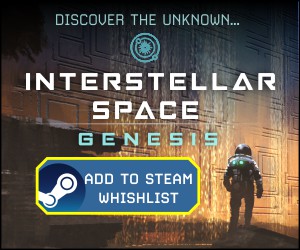
21 Comments
Related Articles:
- Planetary Annihilation Gets Funded With $1.3M To Spare!
- Planetary Annihilation – A Next Generation RTS [Kickstarter]
- Planetary Annihilation Beta Begins
- Planetary Annihilation Officially Released – First Impressions
- Planetary Annihilation – Beta First Impressions

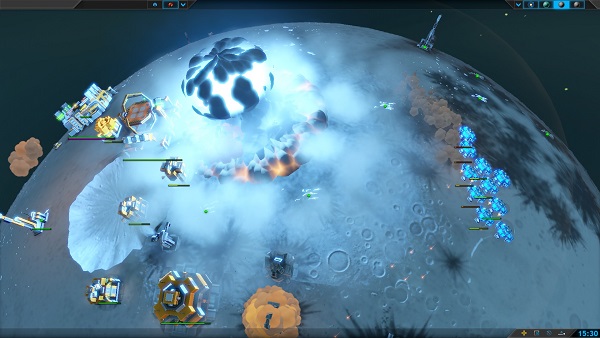
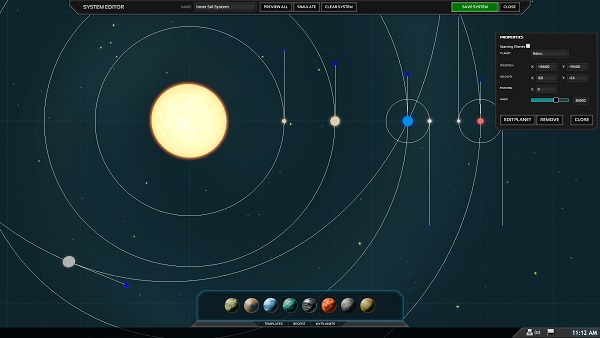
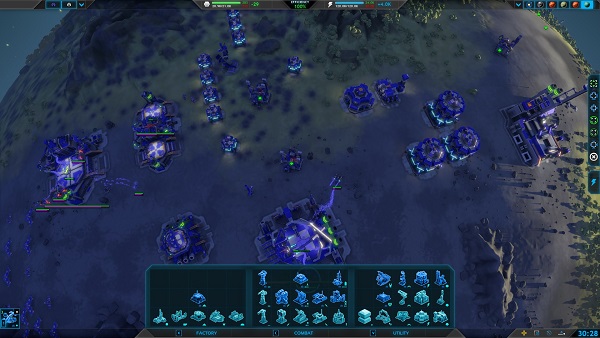
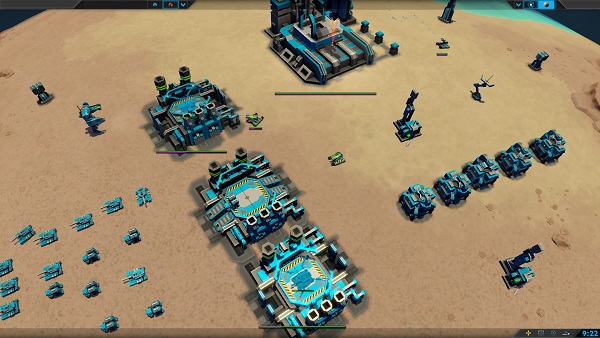
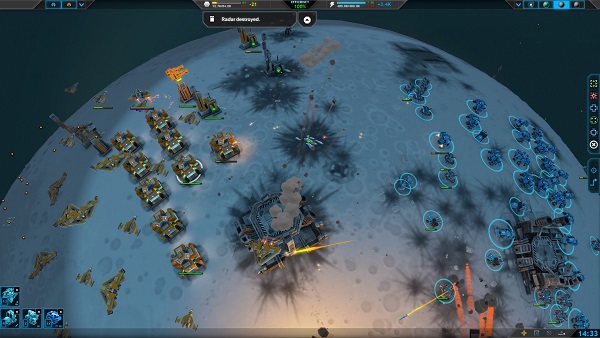
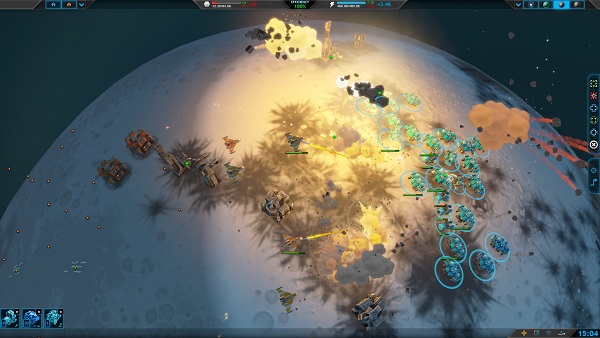
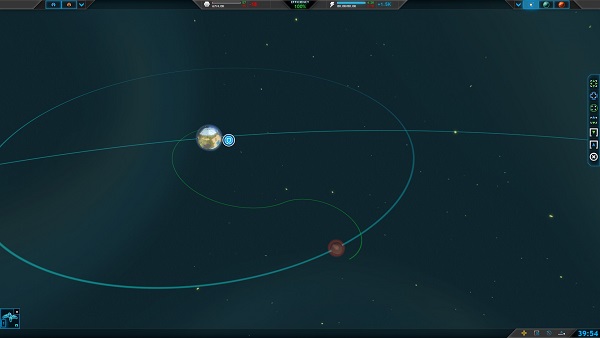
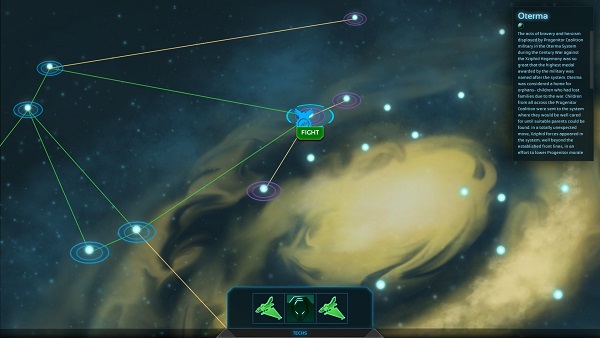
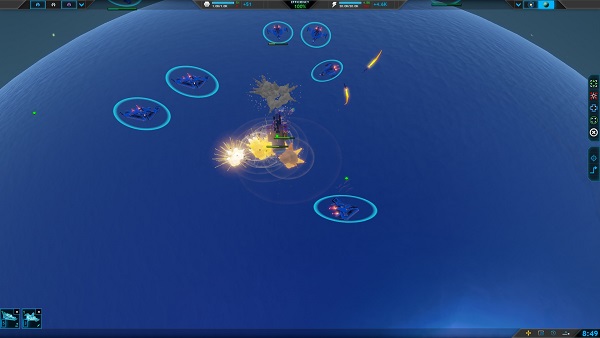
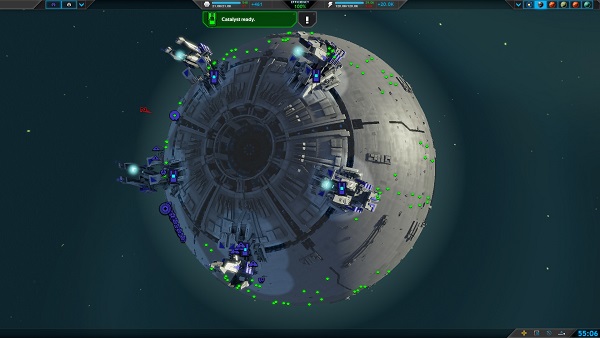
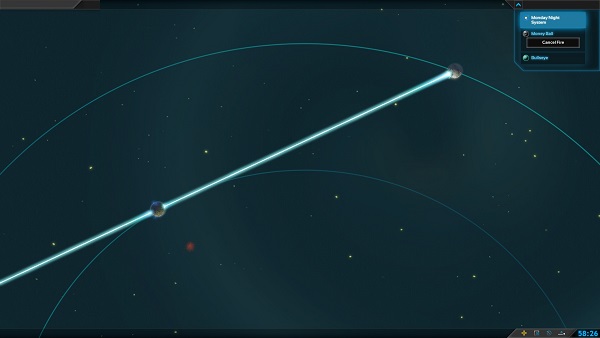

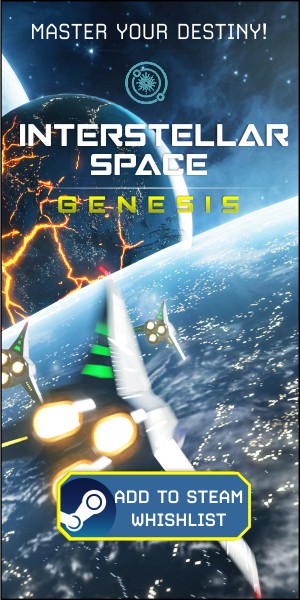


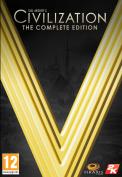


I said pass to this when it was like 90 euro early access.
Good job with the review :)
I bought the game.. although unhappy with it when it was on sale for 15 or 20 euros.
Not ever going to buy a game thats 90 euros.. And a game thats this basic isnt worth 90 euros.
They took a lot from the Supreme Commander series (which is ofcourse natural since the makers are Supreme Commander makers)
Just lacked a bit.
Gotta admit, the game’s lack of distinct sides has killed it for me. I have very little interest in playing against identical units and enemies.
No save in mission? Seriously?
“Though community guides do exist, the game only offers a small YouTube video as a tutorial.”
And this game is FINISHED, supposedly?
When I complained about the lack of non-worthless tutorials in Kerbal Space Program, and that I did not want to watch a bunch of fucking Youtube videos, the game’s fans gave me the excuse that the game was still in development / Early Access, that features were being changed all the time, and that the developers would have to waste time constantly remaking the tutorial if they did one now.
This game, on the other hand, no longer has any such excuses.
Not that the tutorial really matters, of course. RTS, no in-mission saves, weak single player, every faction is the same… pass.
This is what we get for community funded games, they are far from perfect and need ongoing patches/development. The budgets of so many of these games are so tight it really shouldn’t be surprising that they are never %100 feature complete.
That said I have really enjoyed this game and got $30 worth of enjoyment out of this game. I find the game somewhat polished, with strong multiplayer which has multiple fun victory strategies. The single player is a bit fun but rather 1 dimensional and short.
This review is really spot on but I would give it an 8/10, for $30 i don’t regret buying it at all. Its not worth it for the single player only.
Well-said Chris concerning crowdfunding/Kickstarter. Although the concept looks great on paper, the past year has more than evidenced that it is far from the game development panacea many had hoped. For my part I sensed some time ago that Kickstarter was the most recent popular trendy/hipster paradigm.
I hold out SOTS(Fixed), SOTSII(Fixed but not worth playing), and Master of Orion III(My Favorite Example of a game gone horribly wrong.) as a counter argument to your claim here. Be it KS or with a traditional publisher a game can just royally suck on release. FTL is a good example of a KS game while Stardrive an example of both Success and Failure similar to Planetary Annihilation (PA is far funner than SD IMHO.)where not everything they set out to do is completed. But even traditional gaming had that. Need I point out Freelancer(Hyped so much stuff that never panned out)?
Be it traditionally developed or KS a game can just suck and the failure rate for KS doesn’t seem all that different from traditional development. KS is pretty much just a way to pre-order well in advance and hope it pans out.
Alexodia: yep, even traditional developers can release games that suck because of they aren’t finished or that suck because they just suck. It happens. However, as for me, last few years disillusioned me completely about kickstarter, early access and all that hipster (like John said) crap. That because one and only such game that didn’t suck was Wasteland 2. And only after most horrible bugs, like processor overheating (seriously, i didn’t even think that was possible) were fixed.
And in most interesting department, 4x, everything was mediocre at best. Compare that to Firaxis games, they are always very good.
I’m skeptical towards games that are funded purely by consumers. Most KS simply doesn’t have a business model that’s worth the bytes it’s written on and most end up operating on fumes and promises a year in.
Even for experienced devs, getting a huge chunk of potential sales BEFORE you’ve completed the game just makes slapping on the ‘mission completed’ tag soooo much more tempting – especially when deadline approaches and the money/sales is below expectation.
Personally, I will only support games that’s already partially funded in the traditional model (proper investor demands more accountability than KS kiddies) and only going the EA/KS route for extra polish. Divinity: Original Sin is probably one of the best example.
Alex and Van – Not saying that the traditional method of game development and publishing is perfect; sometimes they are far from perfect: Elder Scrolls Online and Destiny being too relatively recent examples (As an aside, I used to think that Zenimax/Bethesda could do no wrong until I tried TESO). I’m only saying that Kickstarter/crowdfunding has not been an improvement over the traditional model.
Concerning Planetary Annihilation, interesting how there was a lot of hoopla when this game was announced several years ago, but now that it has been released there hasn’t been much fanfare at all. Interesting that.
It looks like Supreme Commander but you rotate the battlefield instead of scrolling it.
I wouldn’t paint the picture of KS too black. Out of the projects I backed two turned out to be really great and most others unfortunately are still not finished so the verdict is still out. Only with one game I backed I lost interested but that’s because I have so many others games still to waddle through so not necessary the game’s fault it is just not as exciting as hoped.
Not having a tech tree is not really a problem : you can have an “economic” tech tree by making some units/structures a lot more expensive than others. It’s a shame PA doesn’t quite manage to pull that off.
However I feel that lack of unit diversity is a big problem in PA :
– I don’t understand how can you say things like “The large selection of units and structures available is impressive”, while the game feels like it has the bare minimum (and sometimes less) of units for each tier, role and field (land/air/space).
– This is made worse by water units being extremely circumstantial, and the fact that bots don’t seem to really have a distinct purpose compared to vehicles since PA doesn’t really have 3D terrain.
– But the worst problem is probably that units themselves don’t feel really different, and you don’t need special abilities for that when there are a lot of factors you can play with like speed, acceleration, turn rate, various weapons, etc… There doesn’t seem to be any real design effort put into units, and this is compounded by the fact that they tend to die very fast, so they don’t feel much more than pawns.
It’s all this that probably makes feel that there’s hardly any tactics in PA.
Which is a shame, as while the interplanetary part of the game held promise, you also need a fully fleshed game underneath to compete with other TA-like games : Supreme Commander 1 : Forged Alliance Forever, Zero-K, or even Balanced Annihilation (which I feel was better already in 2007 than PA is now)
Well when I say impressive I’m also referring to stationary structures too. Also, you do have more units than what most ‘modern’ RTS tend to have for a given faction.
However, if you factor these games have 3 factions usually and once you factor out the mirror units, those games tend to have way more variability in units and generally a much larger selection with a lot of differences. Combined with the factions to create asymmetry, PA does loose overall diversity in contrast. Which in regard you listed the reasons why this is.
I have listed that this type of lack of diversity is detrimental to the game and it was penalised for it as well. Actually, I used the word shallow, which if you knew me better is as hard of a backhand slap I can give a game :).
You are right about Vertical Escalation could be simulated via economy and buildings for production and not only from ‘teching up’. However, as you said PA doesn’t have either, which was another penalty strike against it.
Combining the two issues is probably what hurt the game the most for the overall review and score.
Stationary structures have the same issue with variety : you have the 2 tiers of short defense anti-land(3)/anti-air/anti-sea and artillery turrets, but which all feel rather same-y.
Different factions are not relevant for a game where the background story is really just bolted on, because the core of the game is the gameplay, not the story.
Look for instance at DOTA, where various heroes were just slapped together without any consistency (but which makes the game better thanks to variety, not worse).
Asymmetry can be done without different factions.
That’s why I’m going to reaffirm that comparing PA to “most ‘modern’ RTS” is not a good idea… unless you drop all the preconceived notions about what a RTS should be… which doesn’t seem to happen here as shown by the discussion about “the lack of separate factions and tech upgrades may make some feel the game is shallow”.
Actually factions are about asymmetrical balance, making separate sides not having the same strengths and weaknesses. I doubt many games use this because they had lore, many times in game design it is the other way around, the lore gets written around after the gameplay decision was made. Or at the very least as an excuse to justify the factions if the lore is history. Generally the lore will drive the art team on making the factions different, gameplay consideration creates the actually mechanical differences.
Even I said in the review, that though this convention is not a must, it definitely helps to create variety. Trying to do so when everything is a mirror is significantly harder. One possible way to generate such variety and even a level of asymmetry is by having so many build options that even in a reasonable long game you will not be able to have built anything and everything and be able to switch back and forth. So the players will go along different ‘paths’. Naturally this doesn’t happen in PA either.
Frankly, you are asking me to drop a ‘preconceived notion’ when you too are running around with one. All reviews will contain elements of opinion, even ones that aim to be more critical or objective. We literally are arguing opinions and not facts, though we try to still keep facts in the picture (which is good, instead what many tend to do of just tossing them away and going with pure ‘feels’).
No matter how hard any of us try to be objective (but I will re-iterate the fact we are trying to be is a very good thing) we will end up disagreeing in some places what makes a good or bad RTS. As such we will also have different examples of games that were ‘perfect’ or ‘very good’.
I welcome discussion (otherwise I would have not responded), and I’m even interesting in your reasons why you think the game doesn’t live up to what it should or could have been as much as I would enjoy a discussion with someone who loves PA and doesn’t understand either of our reasons. Gives the readers a differing view point that helps them understand the game more, since these reviews are primarily written to help gamers shop.
Though I will take a little more stoic defence to saying that my bias is somehow a mistake because it is not the same as your bias.
I am pretty sure, there is someone out there who will say we are both missing it, and with examples and reason point out how you can have that sweet spot with a lack of factions and even with a small range of units and no tech upgrades or distinct economic tiers, and say what they think is the real criteria to achieve deep gameplay and how PA didn’t pull it off. It be interesting to see those points as it will add to the discussion and the review itself. Just as much as someone who does believe PA achieves to create solid gameplay, and how all these views are being nitpicky.
I might have been a tad bit arrogant in my statement… but I didn’t really know how to put it another way.
Frankly, we can try to discuss theory until the end of time, but I’m not sure if we are going to reach much understanding that way.
I’m going to reiterate (like I did in PA preview) that I feel that you cannot really make a comprehensive criticism of PA if you only look at “most ‘modern’ RTS”, and you don’t look at all the other games spawned by TA (even though, taken one by one, their player base is even lower than that of PA).
And I’m going to specifically insist again that you look at Zero-K : http://zero-k.info , because I feel that it manages to do what PA fails, specifically one faction and no tech tree with a lot of unit variety (and an extremely powerful user interface : https://forums.uberent.com/threads/ideas-from-zero-k.34222/ ).
Of course you have to approach Zero-K with an open mind – there’s a reason that, despite having been Greenlighted for several months already, the developers still haven’t been comfortable releasing it on Steam :
http://zero-k.info/Forum/Post/106217#106217
(notice how balance is last in the list and gameplay isn’t even mentioned)
http://steamcommunity.com/sharedfiles/filedetails/?id=247032802
So don’t focus on the shortcomings not inherent to it being a RTS (mostly coming from the libre software background) :
like the non-commercial-looking lobby, low player base (mostly europeans for timezones), barebones single player, lack of offline feature support, possible trolls (most people are very supportive, there are a few though that just don’t know how to/want to handle newbies, especially in team games) and the long messy list of open source features.
Focus instead on (multiplayer) gameplay, the diversity of units, and … the long messy list of features.
I’ve seen the criticism that there are just too many units and removing most of them would be better for the game (because supposedly most of them aren’t being used anyway)… but in my experience that’s not true (again, DOTA is a good counter-example) and it’s more likely that those people haven’t even tried the game and for some reason still feel like they can criticize something they don’t know anything about.
P.S.: It’s being covered on YouTube, I recommend :
https://www.youtube.com/user/Shadowfury333
P.P.S.: And what I love about Spring/Zero-K the most, is that more than a decade after release, innovation is still going on : http://zero-k.info/Forum/Post/101452#101452
Bought this game when it was ~$17ish. It is a disappointment.
The game simply doesn’t feel like a worthy successor to the Supreme Commander series.
1. The AI is not up to par. Perhaps this is because I am accustomed to the superior modded AI (Soren in particular and a few others), but even then, you expect a reasonably decent AI for any strategy game.
2. The 4 sides in FA, with mods had a lot better unit variety and some mods had very distinct sides.
It does feel like the game is overall pretty shallow and needs more development in this front. Perhaps very distinct sides could be added?
3. Graphics feel outdated. Lesser issue, but for a 2014 game, I think it was fair to expect more.
I actually don’t consider the high system requirements a drawback. With an SSD, load times are somewhat faster. In a few years, GPUs will keep up.
My one concern is threads – more are needed to take advantage of 8 or more cores.
Now all that said, as it stands, it’s gameplay that this title needs to focus on more. It’s underwhelming as is.
Well, by many SC series is not considered a worthy successor to TA. I am not saying, FA with some mods is great fun, but except shields mechanics, some interface improvements and graphics it’s just inferior to TA + mods. There is less of everything, tactical options included as there are no construction planes, no c ships (no underwater bases), unit balance is just bad, more advanced units make less advanced completely obsolete, air units after all these patches are still OP (gunships, oh boy). The decline of RTS genre didn’t started with PA.
You do realize Sorian wrote the AI for this game and works for them. I like both RTT and RTS games. Most RTT games like COH2 have 12 units per faction. (give or take) PA has on the order of 50 or 60. To each his own. I like RTS’s wether they are star craft/ wargame series/coh2 series or Men of war. Just depends on my mood.